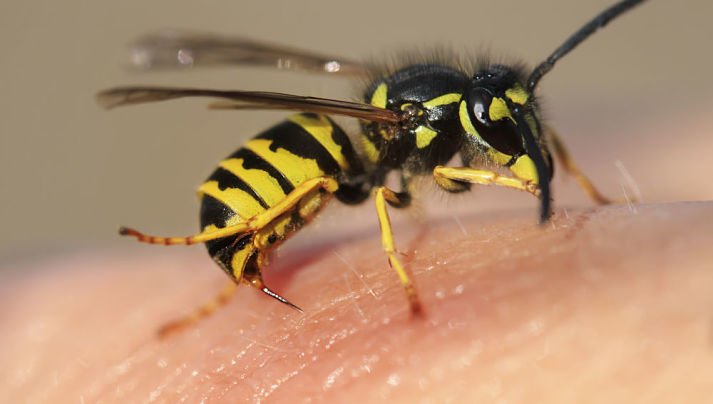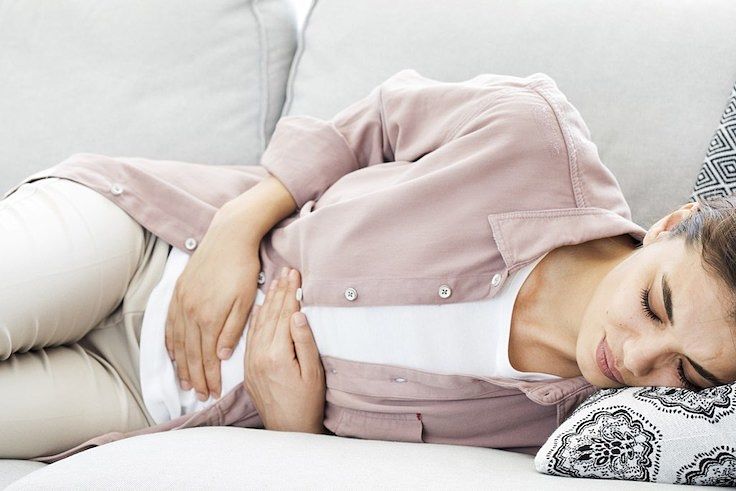Home remedies for wasp stings

Although a wasp sting is usually harmless, many times the unpleasant consequences of a wasp sting can often be alleviated or even avoided with home remedies.

Table of Contents
Wasp stings in allergy sufferers
An allergy to the venom of the wasp sting comes on suddenly, and worsens with each new sting that the insect may produce at another time. So, caution: a severe skin reaction to, for example, a wasp sting may already indicate an allergy.
- Swelling of the skin, hives and redness at the site of the bite and on the face.
- Sudden cold.
- Burning and itching in the palms of the hands, soles of the feet and in the mouth or throat.
- Dizziness, cold sweats, nausea, and even vomiting.
- Rapid drop in blood pressure.
- Difficulty breathing.
First aid for allergy sufferers
As first aid, take the allergic person to a stable lateral position, that is to say, lie down on the floor, with the legs up, before a respiratory arrest immediately a mouth-to-mouth resuscitation should be performed.
What helps against wasp stings?
First, a stung person must ensure that the sting is from a bee or wasp. In contrast to bee stings, a wasp sting does not stay on the skin.
For wasp stings, the skin area should be cooled for one to two hours with a cooling pad, an ice cube wrapped in a cloth, or cold water; otherwise, a ten-centimeter region usually swells around the puncture.
Cooling the puncture site also causes a slower spread of venom, as blood vessels constrict in cold weather. To prevent frostbite, the cooling elements should not rest directly on the skin. People allergic to insects are always advised to bring an emergency kit that contains antihistamines that counteract the effects of histamine in the body and thus counteract tissue inflammation.
The emergency kit should also include a cortisone preparation, an aspirin, a suction cup and adrenaline (in the form of an aerosol and in the form of a syringe) in case of respiratory distress. So that wasps are not attracted to leftovers, children should clean their mouths after eating and it is preferable not to leave food remains if we go out on a picnic.
Since the smell of sweat attracts wasps, you should shower immediately after sports activity. For safety reasons, shoes should be worn near fruit trees, flowers, or lawns. In public areas, special care must be taken around trash cans.
Quick help
Scratching the bite site should be avoided to prevent wound infection and it is advisable to disinfect the area. The venom of the wasp must be extracted from the wound, but not aspirated, so that it does not spread through the mucous membranes. Ideally, the removal of the toxin from the wasp is done with a suction seal.
Also, a small plastic syringe, the tip of which has been cleanly detached, is suitable for sucking up the wasp venom to prevent it from spreading through the body. In wasp stings in the mouth, which can cause rapid inflammation of the mucous membranes and therefore cause suffocation, it is advisable to remain calm and immediately call a doctor or ambulance. This requires urgent attention.
A person affected by such a wasp sting should not drive a motor vehicle to avoid risk of accidents. In addition, a doctor must decide which hospital (for example, for the treatment of children) is suitable. If an allergic reaction occurs, the allergic person should lie on the floor. Your legs must be raised.
Alternative remedies
Sachets with cold water of vinegar or acetic clay help prevent wasp stings. The saliva adhering to the sting site should be able to neutralize the wasp venom. Beekeepers often use warm, salty water, which they apply with a cotton cloth to the skin.
The active anti-inflammatory and anti-irritant ingredients of the ribwort plant (plantain minor or seven veins) can produce quick relief when applied to the skin. This plant can be recognized by its pointed and narrow leaves, which join close to the ground in a rosette shape.
- After a wasp sting, the “Apis mellifica” or “Vespa D6” globules are also used.
- With an onion cut in half it can be rubbed over the puncture site, resulting in immediate application for quick pain relief and a major anti-inflammatory. The onion should be used for at least ten minutes.
- It is also possible to apply cube sugar moistened with saliva, which draws the moisture out of the bite and thus inhibits swelling and pain.
- As a disinfectant after a wasp sting, citronella, an oil obtained from lemongrass, and tea tree oil are very effective in relieving the pain of a wasp sting. Essential oil applied to the skin (e.g., citronella oil or cedar oil) deters wasps.


